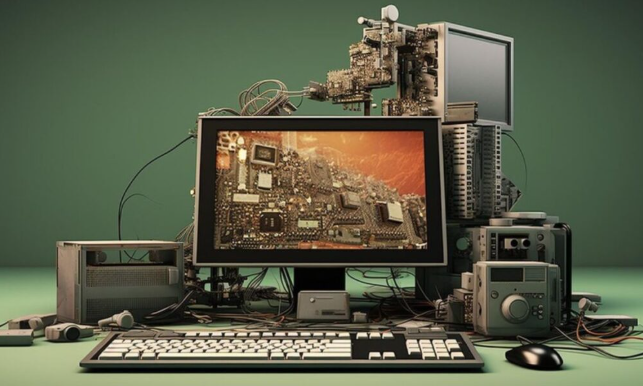The Dell Dimension L800r, powered by an 800EB MHz processor, was a significant player in the personal computer market during its release. This article explores the key features, specifications, and relevance of the Dell Dimension L800r in its time, along with insights for enthusiasts and collectors today.
Overview of the Dell Dimension L800r
The Dell Dimension L800r is part of Dell’s Dimension series, known for its reliability and performance. Designed for home and office use, it featured a compact design, robust hardware, and versatile functionality for the early 2000s.
Key Features
- Intel Pentium III Processor: The system is equipped with an 800EB MHz Intel Pentium III processor, which offered a balanced combination of speed and efficiency.
- Expandable Memory: The Dimension L800r supported up to 512MB of SDRAM, making it capable of handling multitasking requirements of its era.
- Compact Design: The tower’s sleek and straightforward design made it ideal for small workspaces.
- Versatile Connectivity: With multiple USB ports and expansion slots, the L800r allowed users to connect peripherals easily.
Detailed Specifications
Processor and Performance
The Intel Pentium III 800EB MHz processor was built using Intel’s 0.18-micron process technology, enhancing energy efficiency and heat dissipation. With a front-side bus speed of 133 MHz, it delivered smooth performance for applications like word processing, browsing, and light multimedia tasks.
Memory and Storage
- RAM: The Dell Dimension L800r came with 128MB SDRAM by default, upgradeable to 512MB.
- Hard Drive: A standard configuration included a 20GB or 40GB hard drive, offering ample storage for documents, software, and media files.
- Optical Drive: The system often featured a CD-ROM or CD-RW drive, supporting both data storage and media playback.
Graphics and Display
The system’s integrated graphics were sufficient for everyday tasks, though a PCI graphics card could be added for enhanced video performance. Supported display resolutions ensured compatibility with standard CRT monitors of the time.
Operating System
The Dimension L800r was commonly shipped with Windows 98 or Windows ME. These operating systems provided a user-friendly interface and compatibility with a wide range of software.
Connectivity and Ports
- USB Ports: Two USB 1.1 ports for connecting peripherals like printers, scanners, and external drives.
- Audio: Integrated sound card with standard audio input and output ports.
- Expansion Slots: Three PCI slots allowed users to add hardware like network cards or upgraded graphics cards.
Performance in Everyday Use
The Dell Dimension L800r was a reliable machine for its time. It excelled in tasks such as:
- Office Productivity: Running word processors, spreadsheets, and presentation software.
- Internet Browsing: Compatible with dial-up modems and early broadband setups.
- Light Multimedia: Playing audio CDs and viewing video files with minimal lag.
However, it struggled with resource-intensive applications, which were emerging as technology advanced rapidly.
Relevance in Modern Times
While the Dell Dimension L800r is no longer a practical choice for modern computing needs, it holds value for:
Enthusiasts and Collectors
Collectors often seek vintage PCs like the Dimension L800r for their historical significance. Restoring and maintaining these systems has become a niche hobby, showcasing the evolution of technology.
Educational Purposes
Older systems like this are useful for teaching students about the basics of computer hardware and software, providing hands-on experience without the complexities of modern systems.
DIY Projects
The Dell Dimension L800r can serve as a foundation for DIY projects, such as creating retro gaming systems or experimenting with Linux-based operating systems.
Maintenance Tips for the Dell Dimension L800r
- Clean Regularly: Dust can accumulate inside the case, affecting performance. Clean the interior with compressed air periodically.
- Upgrade Components: Maximize performance by upgrading the RAM and adding a modern storage solution like an SSD (if supported).
- Use Legacy Software: Stick to software compatible with Windows 98 or Windows ME for optimal performance.
- Store Properly: Keep the system in a dry, cool place to prevent hardware deterioration.
Conclusion
The Dell Dimension L800r, powered by its 800EB MHz Intel Pentium III processor, was a capable and dependable computer during its prime. While its performance is outdated by today’s standards, it remains a valuable piece of computing history. Whether you’re a collector, an enthusiast, or someone seeking a retro computing experience, the Dell Dimension L800r offers a fascinating glimpse into the evolution of personal computers.
By preserving and maintaining vintage systems like the Dimension L800r, we can appreciate the milestones that have shaped the modern computing landscape.







